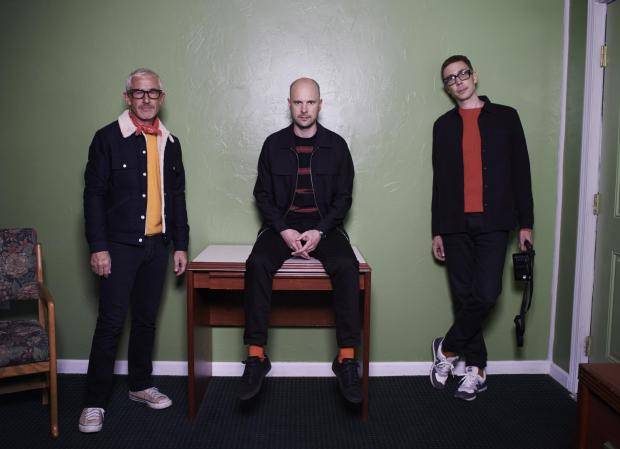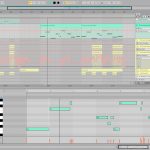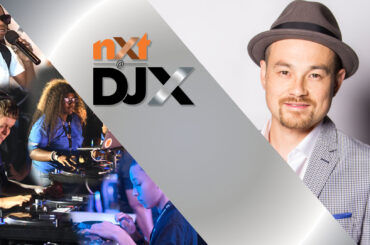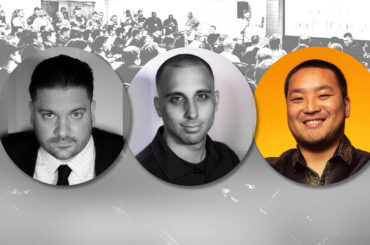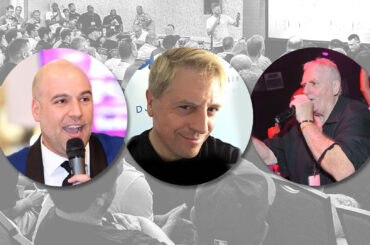Detroit – It’s a chilly Saturday night at The TV Lounge, one of the Motor City’s grittiest havens for hometown grooves, but the local party people are beginning to warm up.
Inside the tight environs, it’s Detroit-techno troubadour Carl Craig spinning in the backroom, the masked house-slinger Merachka in the front. Drinks are flowing, the coat-check’s a mess and the main bar stands three-deep as far as the eye can see. Nonetheless, the TV Lounge bartenders – rocking Tigers caps and brandishing Old English “D” logo tattoos – are busting it, delivering high-speed pours and exchanging currency with jack-flash efficiency. Things are getting a bit wobbly.
Typical of midtown Detroit, the scene is a rich mixture of urban culture – white, black, Latino, Middle Eastern, straight, gay and whatever/who-cares – all getting down the way they only do in The D. It’s a techno party – a little rough, maybe – but the bass is rumbling, arms are flailing, and it’ll be going on for awhile.
Cut to the following scene the very next evening, just a five-minute drive away… the Fillmore Theatre sells out with a house full of well-behaved suburbanites, all-in to experience their favorite community leaders, Above & Beyond. Less grit, fewer neck tattoos, perhaps, but there’s no drop in enthusiasm. Tonight, trance is very much alive in America’s most fervent techno town.
For this A&B performance, it’s just Jono Grant and Tony McGuinness on the decks. (The studio trio usually tours two at a time, swapping out every few gigs – third member Paavo Siljamäki will join them three days later in St. Louis, replacing Grant.) Before the show, the venue’s green room is a vision of tranquility. Grant and McGuinness luxuriate on a couch and greet old friends and new acquaintances, offering them beverages and nibbles. In fact, just prior to set time, Grant picks two choice chocolates and downs them, semi-ceremoniously, as if they were two shots of primo tequila. Mötley Crüe circa 1985, they’re not.
But when Grant and McGuinness hit the Fillmore stage, the theater explodes with the unique kind of exuberance only afforded performers who’ve forged the deepest connections with their audiences. It’s not merely pleasant applause. It’s warm, yet loud and wildly loving – as if they’re welcoming family because, in a sense, they are.
Indeed, like very few other electronic acts, Above & Beyond has created its own community (or “Anjuna Family”), and consequently, it has enjoyed a career that only seems to keep ascending. On the artist front, the group’s emotive trance tunes – from the melancholic “Sun & Moon” to the ecstatic “Blue Sky Action” and even the cheeky “Naked” from its latest Common Ground album – continue to widen the group’s reach in the electronic world. In fact, the new album quickly topped electronic charts and debuted at No. 3 on the Billboard pop-album chart.
But there’s more. Between 64 singles since 2000 (under various monikers and fronted by vocalists like Zoë Johnston, Justine Suissa and Richard Bedford), five artist albums since 2006 (including its OceanLab incarnation), the non-stop touring, which includes major festival stops worldwide, and the operation of its Anjunabeats/Anjunadeep labels, the London-based trio has built up buckets of goodwill with the expanding fanbase.
Additionally, the group’s ability to perform its songs within a more traditional band set-up – typically, McGuinness on guitar, Grant on Rhodes, Siljamäki on piano – has certainly put A&B in a unique place. (Check “Giving Up the Day Job,” the recent documentary that highlights A&B’s 2016 acoustic tour and dramatically illustrates its hold on fans.)
But, as the group freely acknowledges, as much as anything, it’s A&B’s weekly “Group Therapy Radio” two-hour show/podcast that maintains its relative ubiquity. Playing music new and old from the group, its labels or from anywhere else they desire, “Group Therapy” keeps fans connected to A&B’s world and involved with each other via forums and social media. And when you see the group perform, whether it’s on the mainstage at Miami’s vast Ultra Music Festival (55,000 fans per day), New York’s iconic Madison Square Garden (21,000), or Detroit’s relatively intimate Fillmore (2,200), it’s strikingly apparent that Above & Beyond has created a universe that any artist from any genre might envy.
Indeed, at the Fillmore, Grant and McGuinness delivered two hours of A&B hits, complete with Detroit-specific text-message backdrops and eye-gasmic visuals that kept clued-in fans on their feet throughout and had them fully aglow upon exiting. It was an evening offering an emotional full-range: screams, hugs, singalongs, and yes, even some tears.
Prior to the Detroit show, DJ Times caught up with Above & Beyond’s Jono Grant and Tony McGuinness in New York at SiriusXM’s Rockefeller Center studios, where they discussed a variety of topics – from studio and DJ technologies to the new Common Ground album and their very special relationship with fans.
DJ Times: About the new record, Common Ground… any difference in the creative process from 2015’s We Are All We Need.
Grant: I think one of the things in the production process was probably the idea of committing to stuff and recording it almost a bit like a band. We used a lot of analog synths this time – we tried to get an organic sound.
DJ Times: Why’s that?
Grant: I think in the modern recording world, there’s a tendency that if you’re using a lot of soft-synths you want to be able to change things all the time. But if you’ve recorded a Jupiter 8 pad sound down as audio, it’s kind of stuck there – you move onto the next thing. So that approach, especially toward the end of the record, we found useful, to keep things moving forward.
DJ Times: How has playing live as a full-fledged band informed this record?
McGuinness: I think it maybe made us aware of how songs sound in that format. It’s a little bit more to see our own songs and see they can work in that format, and I think that’s one of the reasons why we were kind of relaxed to release “Always” [a ballad featuring Zoë Johnston] in the form that it was. Maybe doing the acoustic thing gave us that confidence in a way. But to be honest, I think we treat the two things as being almost 90-degrees to each other. Doing acoustic gives you a break from producing in electronic form and, when it’s all finished, it’s kind of refreshing to go back to the electronic sound.
DJ Times: Anything else dramatically different this go-round?
Grant: Well, on this album we got back in with [vocalist] Richard Bedford, who we worked with on [2006’s] Tri-State and [2011’s] Group Therapy. He’d gone off to do some solo stuff with other producers. We had “Northern Soul” and we thought it would be great to hear Richard on this – imagine how it would sound! We tried a few singers on this and it didn’t sound quite right for the record, but it was amazing to get him back.
DJ Times: In the studio, are you still using Logic and Ableton Live?
McGuiness: Yeah, and I think we had grown a little impatient with some of Logic’s idiosyncrasies on the last album. There were issues with automation, particularly taking chunks of the song away and moving them and the automation not tracking. But they seem to have sorted out a lot of that stuff now.
DJ Times: We saw the 2018 version recently at the NAMM show.
McGuiness: Yeah, and there’s a brand-new update that just came out that’s got some very exciting changes. The thing you notice when you try other production software like Ableton Live and [PreSonus] Studio One is the ease at which you can play loops at the tempo of the song, and Logic’s just introduced that. I’m hoping they keep giving us the updates that we need because, frankly, I think Logic’s the easiest to work with.
Grant: It’s nice to see Apple actually caring about Logic again. It seemed like they were making [Logic] more like GarageBand, but not really adding the features that people wanted, so I’m really curious to check out the new tempo-audio-stretching thing they’ve brought in.
McGuinness: And they’ve got a Pultec EQ in there, which is going to help us with our UAD loading. [laughs]
DJ Times: So, I assume you’re still using Ableton Live for the “Group Therapy” radio show?
Grant: Yes. I think Ableton has so many things going for it… I really like Ableton for the way it deals with audio and tempo, and that’s why I’m hoping Logic’s going in that direction a bit more because if you had those two DAWs combined, in a sense, you would have – in my mind, in terms of creativity – the perfect DAW… because Ableton’s great for loop-based dance music and Logic’s a little bit more friendly for stuff that’s a bit more linear.
McGuinness: We also use Ableton for bootlegs and stuff like that. It’s just really, really quick.
DJ Times: Your records have this incredibly pristine feeling to them, but they don’t sound sterile. For example, your piano sounds are so stark…
McGuinness: Then tell him of the great lengths we went to get the piano sound on “Always…” [laughs]
Grant: I think sometimes we do things that wouldn’t be noticed by everybody. We believe in the attention to detail – tone is really important in our records, as well as the music. This is nothing new – people are doing this in other genres of music. Yet, perhaps for some reason, it’s done less in dance music and a lot of people are balancing stuff in the box…
DJ Times: So what about that piano sound, for example?
Grant: What Tony was alluding to was… the piano is just a [Steinway] EXS24 grand piano in Logic – it’s nothing special. When I played that in, I just had a low-pass filter on the piano because I was just trying to get an idea down – I wasn’t worried about the piano sound. It was just a set of chords with Zoë singing over the top. But then later, we had this piano sound that was suddenly part of the record. I was really saying to Tony that we want it to sound like a crappy piano in a bar somewhere – want a bit of fur to it, a bit of harmonic richness. But we don’t want it to sound really bright, so we’re stuck with this EQ filter, so we rooted back out of the box with the filter on, back into a Neve 1073 [vintage preamp] or BAE 1073 preamp, just to make it seem like it’s been in the outside world.
DJ Times: Why?
Grant: See, the trouble with a lot of dance records is that they’ve never been turned into electricity to the point that you actually hear them – everything is rendered in the box. So, then it has a bit of hiss on it. It has a bit of harmonic richness because those boxes put in harmonic distortion. So, I suppose, what we try to do is add the attention to detail in the records that we’ve all grown up with. Tony’s in the band Sad Lovers & Giants – they recorded to tape and we’re interested in that. We’re always trying to put something organic in there, just to make stuff feel a bit more real, to have its own personalities… because with soft-synths, everybody has the same sounds.
DJ Times: So how does a producer create a difference?
Grant: The only way to be different is, if you’re going to use those soft-synths, you have to root them out of the box or think outside of the box and use them in a different way.
DJ Times: But, of course, one of the main things that differentiates Above & Beyond from a lot of electronic acts is that you have songs that stand on their own. You could play them on piano or guitar…
Grant: Well, we try not to slap a vocal on an instrumental too much. We try to get the vocal on early in the process of writing because then you kind of write the music around it and it’s a bit more complimentary.
DJ Times: Tell me about the process on “Naked,” from the new album. I know you believe the lyrics are easily misinterpreted, but that’s a catchy one.
Grant: It’s slightly… has one of those cringe moments with the lyrics. That song began with no drums – it was kind of an electronic, downtempo, ambient piece of music. The one thing we’re very conscious of is writing the right stuff at the right tempo. It was 126 BPM, close enough to the type of tempo that we might play out. See, if you write something at 100 BPM, suddenly you’re in no-man’s land if you want to turn it into a dance record. So, we did it with no drums and adjusting a vocal over the top. I suppose that’s another difference – we tend to write with the singer in the room.
DJ Times: But you made this one right for the dancefloor…
Grant: So, we had this ambient thing, then started making a dance version of that. By the end of it, Tony was putting guitar on it and we went to town and turned it into a big dance record that’s almost got those 1998 sounds in it – arpeggiated synth riffs. We tried to make it a little retro… We wanted to have a little bit of that flavor in that track – we thought it would be fun.
DJ Times: And your DJing platform is still Pioneer DJ gear with rekordbox?
Grant: Yeah, and one of the reasons we use that is that it’s a holiday from staring at the screen in the studio. When you go out and play to an audience, you could bring a laptop, but we’re not sure that it would add that much value to the performance – and it’s a break from the studio. We already have one laptop where we can do visuals. There’s enough computer stuff going on, isn’t there?
DJ Times: What was your evolution with DJ gear?
Grant: When I first started DJing, I was at university and it was all I could afford… I bought one Technics 1210 with a Stanton cartridge on it. I bought it because I wanted to make dance music and I decided I wanted to buy vinyl and listen to it. So, I bought myself one and then I got another one and, I think, a very cheap and basic Vestax mixer.
DJ Times: Then, of course, you went digital…
Grant: I remember the first time I ever used a CDJ, which was in a club in Japan called Velfarre, and it was the first time I saw a CDJ-1000. I was quite nervous, but I thought… I’ll have a go at this. I put the CD in and mixed the track in for the first time ever in a club in front of 2,000 people… and I thought, “Wow! This is incredible – they’ve made it!” Obviously, it’s easy to look back on it with rose-tinted specs, but my memory of it was… this is an experience that is very similar to vinyl. They’ve nailed this – and, of course, they got better and better.
McGuinness: The other thing that CDs have allowed us to do, as our shows have gotten bigger… the show element of what we do has become more and more important…
Grant: We say CDs, but it’s actually SD cards…
McGuiness: Right, we use SD cards… and what we have developed… because a lot of big shows will have pyro and other things that are timed… and what a lot of people do is pre-record a set and have a time-code when all of this stuff happens… we’ve developed our own bespoke software that takes the MIDI clock out of the decks. So whatever tempo we are currently playing at that time, that tempo informs the visuals that we’re playing. So, we’ve developed these bits of video that can be played at different speeds and we’ve worked long and hard to enable that to happen without any artifacts or clipping in the video or any juttering… and that enables us to do a show with all of these things perfectly timed, but actually still be DJing.
Grant: It doesn’t have to be pre-planned, which is nice.
DJ Times: How important has the radio show, “Group Therapy,” been for the group?
McGuinness: It was always important to us on so many levels, however you look at it. We have this ability that, let’s say, The National and Coldplay don’t have – outside of record cycle – a reason to be in somebody’s life every week. We’re kind of tapping you on the shoulder and reminding them that Above & Beyond is still here.
DJ Times: I think the fans are volunteering at this point…
McGuinness: Well, they are, but it’s still a platform, and the fact that we have a label… and the fact that we have other people who want to be on the show gives it a validity. But really what we’re able to do with the radio show is constantly be in people’s lives. We can’t really do that with touring – we can only be in one town at a time. So, even though we try to cover the world every year or two, that radio show has just given us this wonderful reminder. I mean, if you go back 20 years, people would have a record collection and you would be the vinyl in their record collection… but that’s all gone.
DJ Times: So, there’s a certain level of ubiquity that you have…
McGuiness: Right… and we now have this virtual tap on the shoulder that brings people together to listen to it. Also, changing the name to “Group Therapy,” that was really a crowd-suggested thing because once that album came out that became a phrase with which they were describing our live shows better than “Trance Around the World.”
Grant: It was far more appropriate, as well. You can’t own the brand “trance,” but you can own “Group Therapy.” About some of the material [on the show], a lot of people were saying, “Aw, this isn’t a trance record.” But we didn’t really care what it was because we’d just play a track we loved…
DJ Times: Trance fans can be picky…
Grant: Yeah, so we were like, “Well, we have freedom from within as well to do whatever we want, rather than being labeled… trance.” So, we still play trance music, we still consider ourselves trance, but it’s nice to have a brand that we own instead of a brand that we can’t have control over.
DJ Times: How has the process of the radio show evolved over time?
Grant: I don’t think it’s actually changed that much, to be honest, the way that we put together the show. Of course, in the old days, we’d get sent records; now we get sent files, and we get a heckuva lot of them. We have someone in the office who puts together a list of all of the songs each week and it’s literally an email with the names of the tracks. We go through each one of those songs and listen to them and pick them for the show. So, it’s become much more digital, much more online. But in terms of the philosophy, it’s exactly the same. We just try to find music that we love.
DJ Times: Your approach to playing newer vs. older material?
Grant: We try to generally have half of the records to be new records, and half the records are carried through from previous shows. Although there’s a lot of temptation for the podcast to be absolutely new every week, we would rather build a record over time. Sometimes we play a record for three or four weeks or more because it takes time for the audience to fall in love with something sometimes – and you see it online. Someone will write, “I didn’t like this track, but it’s really growing on me now.” We try to treat it as a proper radio show, instead of just a snapshot of this week.
DJ Times: Even though you’re a European act, does it mean something to sell out U.S. venues like Madison Square Garden? Did you feel the history there?
McGuinness: Oh, God… yeah. It’s the most famous venue in the world, really. I mean, Muhammed Ali fought there!
DJ Times: And you see all the pictures in the green room of the all the venue’s past performers and athletes…
Grant: Yes, you see the pictures. I always like to have a look at who’s played there… “Oh, my God! No pressure!” [laughs]
McGuinness: And the thing about that show, because it was also a radio show, is that you’re on for like eight hours and you don’t really have a chance to take it all in. It wasn’t until the end when we were backstage and the manager presented us all with these beautiful, Tiffany, boxed, silver tickets of the event. And I’m looking at the box and it says, “Above & Beyond, Madison Square Garden, October 28…” And then I thought, “We just played Madison Square Garden!” It was real! It really happened! It was fantastic.
DJ Times: How do you decide when to debut a particular track at the big shows?
Grant: For the ABGT big shows and live events we do, that is kind of our point in the year where we kind of get our music together. So, that’s when we try out a lot of new material that’s going to be played over the next year. We tend to stress about two months in the studio, desperately scrubbling around and finishing off various tracks in the locker. Then they get tweaked and sometimes people complain that they like the original demo that they heard before. [laughs]
DJ Times: Looking at your tour schedule, I notice that you’re playing some interesting spots this go-round, places like Idaho and some Southern cities. It’s not just all the obvious big cities…
Grant: We love that. The great thing about touring America is getting to go to the smaller places, like traveling through Charlotte and places like this. You don’t get to go there very often and seeing that your music has reached these places, and the reaction of these audiences… their enthusiasm is amazing.
DJ Times: With the Anjuna record labels, how much are you involved in the day-to-day operations?
Grant: We’re very much involved in all of the A&R processes. We have a great team in the office that enable that to happen, thankfully. We love to A&R our own stuff because, ultimately. we’re the people fronting the whole thing. We’ve got to sign music that we can play in our sets and that we can believe in, play on the radio and really get behind. So, I think that’s been one of the keys to our success has been the fact that we’ve always kept a foot in that world. It’s not anything particularly complicated, but it’s just making sure that it’s stuff that we love. We’d never change the formula.
DJ Times: Advice for young DJ/producers?
Grant: I think the first thing is to play the long game. You need to have a course for the ship to travel on. You need to be passionate about something, and really go for it. Go all-in on that thing, if you really believe in it. It’s very easy to get distracted in an industry like this, especially by what’s going on in social media by other artists and think, “Oh, they’re having success with this type of music, so maybe I should be making this style.” But that’s the route to failure.
McGuinness: I think the world is changing. Nobody can do what we did because, y’know, it’s 2018 and the record business as it was when we started was a very different place. Back when we remixed Madonna [2001’s “What It Feels Like for a Girl”], that really meant something – and now it probably doesn’t. It’s not through any fault of Madonna or us – it’s just that the world has moved on from that. I would say that it’s now harder than ever to experience a kind of break that’ll make your career. I know people who’ve been on “America’s Got Talent,” have done very well in it and come out the end of it thinking, “Well, it’s the gravy train from now on…” And that hasn’t happened. In the same way, we had lots of little breaks, but if one of them’s taken away or we got another one, I sort of feel like we would still be here.
DJ Times: Still, there are no shortcuts…
Grant: Right, no shortcuts, but also the other thing is not to look at the scoreboard too much because if you compare yourself to others, there’s always someone selling more records or doing a bigger arena. Whichever level you’re at, there’s always someone “better” than you, but if you can just focus on what you’re doing and being the best you can be, that is all you can do.
DJ Times: It’s been said that creating art is its own reward.
Grant: Indeed, I met a young guy in Chicago and the first thing he said to me was, “I do EDM and I’ve got my marketing plan sorted out and I’ve got investors,” and all this kind of stuff.
DJ Times: Um, like… got any songs?
Grant: [laughs] It’s amazing how many people, even people in the audience, seem to think it’s all about marketing. You might be able to sustain a career for five minutes, but you have to have something… music is the product, not social media posts, not any of these things. They don’t really sell tickets long-term. They might sell your tickets one week, but long-term music is always the product.
DJ Times: I can’t talk to Above & Beyond without discussing your fans, who are uniquely dedicated, to say the least.
McGuinness: They are. I think we can only take credit up to a point for that. It’s almost become a self-managing and self-perpetuating thing. From the beginning, we have tried to communicate with our fans and encourage them to communicate with each other and with us. We had a forum to start – before Facebook, or MySpace or any of that – and the idea that there was a community of fans of Above & Beyond and of our label, Anjunabeats.
DJ Times: And it grew from that…
McGuinness: I think that was one of the key things for us in our early thinking because we had agents and people saying to us, “Oh, you have too many brands – Oceanlab, Above & Beyond and Anjunabeats.” But one of the things that Anjunabeats allows – especially in a world where most of the early adopters are guys – is to have something that they can unashamedly fall in love with, maybe have a tattoo or something…
DJ Times: Oh, I’ve seen ’em…
McGuinness: [Laughs] I mean, it’s a record label! So, when we talk about it… it’s the Anjuna Family and, of course, it’s inextricably linked to Above & Beyond. And it feels like an easier family to be a part of than… the Above & Beyond fanclub. Know what I mean?
DJ Times: Oh, I get it – a lot of people do.
McGuinness: And once you label it Anjuna Family, everybody… from us to the other people on the label, the sister label Anjunadeep, the people in the office, the fans… everybody genuinely feels a part of it.
DJ Times: How did the “Push the Button” moment happen, whereby you let some lucky fans play a tune at your show?
McGuinness: Again, that was the crowd’s idea. We were playing “Sun & Moon” over and over again. There’s a bit where it goes quiet, then the riff comes in and we thought it would be great to fuck with people by putting a pause in there. So, we put a cue point in it and we played it out maybe once or twice using this method, where people are expecting it to go, “Bahhhhh!” and then it doesn’t. [Laughs] I certainly don’t have a particular memory of doing it the first time, but there was a guy onstage with a video camera and I grabbed his hand and forced him to “push play” after the thing had paused… and the video got out.
DJ Times: Viral mania…
McGuinness: Next thing you know, people were at the next show with signs: “Let Me Push the Button!” They gave it the name. They gave it the idea that it was possible for them to be included in it, and we sort of went along with it, which is lovely, really.
Grant: It’s like what we’ve said about the radio show. People were saying that “Trance Around the World” was “our weekly group therapy,” because our album at the time was “Group Therapy.” They were already saying it, so the fans are very often one step ahead of us.
McGuinness: It’s one of those things where… when you see the look on those people’s faces, it’s so important to them. It reminds you of how much fun you should be having, let’s say, when you’re really tired and you’re six shows in…
DJ Times: Maybe it reminds you why you’re doing this in the first place.
McGuinness: Right, and it give us a five-minute break to stop and think, “Hey, this actually is really great – isn’t it?”


